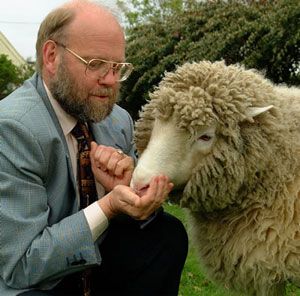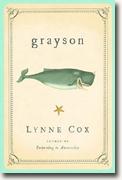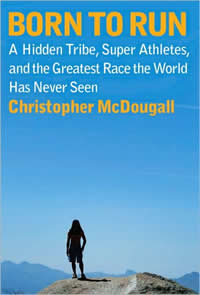
There is a member of my family- several members, actually- who seem to have a genetic predisposition for dwelling on the past. I think that people who wistfully hope that things will always stay the same evolve into people who always wish that the past was a better place and that ultimately, those people evolve into grumpy old timers who angrily snap every time the youngsters start wearing their hair and clothes in strange and unusual fashions and start using slang that might as well be Farsi. It must, then, be tough to be a Paleontologist like Jack Horner, always trying to imagine what creatures that existed millions of years before the first humans existed were like. Horner, who was a consultant on Jurassic Park the popular film about dinosaurs brought back to life, has a reasonably preposterous dream: to do it for real. In his book How To Build a Dinosaur: Extinction Doesn’t Have to Be Forever, he explains that the science to make it happen might just be more accessible than you think.
In the last 20 years or so, thanks to movies like Jurassic Park, people had to get used to certain ideas about dinosaurs that they were not previously used to, predominantly that they were more likely related to modern birds than they were lizards and snakes. As it turns out dinosaurs may have behaved and appeared more like ostriches and chickens than they did Godzilla. And at the same time these discoveries were becoming better understood the scientific community was also racing to map the complete genomes of several species (including our own). It was widely believed that genes and DNA could be duplicated and replicated in a laboratory allowing for copies (or at least near copies) of a life form to be made. After all, even though life forms must one day die, their “code” does not. So as cloning of animals such as sheep became possible both in theory and in practice thought turned to the possibility of cloning extinct animals like dinosaurs. This of course is where Michael Crichton fabricated the notion that a mosquito trapped in tree sap just moments after feasting on dinosaur blood could possibly contain DNA that would allow these creatures to be “reborn”.
Dolly the cloned sheep, one of science’s most notable cloning attempts, was by and large a big failure, and it soon became obvious that cloned animals had physical problems that shortened their lifespans. Additionally, larger and more complex animals proved to be challenging if not impossible to clone. Though it has been outlawed in many countries for ethical reasons, human cloning has not yet occurred (that we know of) mainly because science has yet to figure out how to do it without major complications to the new being.

Determined to go back to the ancient, dare I say “better” version of earth, science, led by Jack Horner, has devised a different way to bring a dinosaur back to life. Or at least, bring back something that would be similar to a dinosaur in many ways. To do it, they have had to reverse their thinking about how better to work with DNA they actually have access to, DNA that has a memory of dinosaur-like traits and tinkering with it until a dinosaur-like creature is born. The idea is that dinosaurs never really went away at all, but are here among us disguised as the creatures they evolved into, the kind of creature whose DNA had the ability to survive the eons more efficiently than any of its ancestors. That creature? The modern chicken, of course!
Evolution, and the idea that all creatures great and small can be connected through some sort of genetic family tree is a hotly contested debate that can inspire shouting matches at everything from PTA meetings to political conventions. I’m not afraid to admit that I am a Christian, albeit one who is fascinated with scientific developments and further understanding of the physical universe. Evolutionary theory does not weaken my beliefs in a loving and forgiving deity. God, in fact, much like the universe, does not change, only man’s ability to understand and interact with Him does. As our understanding of the universe grows whether it be through discoveries of prehistoric beasts, inter-galactic space aliens, or new understandings of where these bodies and brains we live in came from, so too does my appreciation grow for the “man” behind the curtain who set it all in motion.
The idea of evolution makes sense in a lot of ways, though scientists have struggled to put together a definitive evolutionary fossil record. For example, in the ongoing debate of humans and the great apes being from the same family tree there doesn’t seem to be a lot of evidence of a.) a common ancestor, or b.) a successive chain of increasingly different transition species leading up to modern human beings. That’s not to say that it didn’t happen, just to say that the fossil record is hugely incomplete at this time. And the same could be said about birds and dinosaurs. Where you have bird-like dinosaurs like the archaeopteryx and modern birds like the pigeon, I’m wondering where the hundred of variation in between are, or if they will ever even be discovered. To that end, science needs to do a better job of putting that argument together. And without it, it becomes harder to reverse millions of years of evolution, as Jack Horner would like to do, much harder than it would be to turn a modern elephant into a wooly mammoth, I suspect.
One place where you can see obvious “gradients” in the evolutionary scale however is with the domesticated chicken, which almost certainly descended from the red jungle fowl, a wild bird. The two species have many similar characteristics, and yet are also quite different. Horner is confident that by tinkering with the DNA of the chicken it would be possible to hatch something similar to Gallus-Gallus (The scientific name for red jungle fowl). Even further tinkering and the hatchling might grow a long tail, and big teeth, and arms with claws, and so on. So what you would get is a dinosaur-like chicken, but it would be something new, and man-made, not a real dinosaur. Perhaps science might be able to demonstrate a successive chain of increasingly different transition species in the lab proving once and for all how species evolve over time.
Or maybe, like Dolly, Dino-chicken will be a tremendous failure.
One of the arguments that inevitably comes up in the “Genesis is bullshit” debate is how the Bible accounts for dinosaurs. It is a question that was also asked when the western world discovered previously unknown peoples in the Americas and Australia (answered un-necessarily by Joseph Smith and the LDS church) and one that will be asked again when SETI discovers intelligent life on other planets. I don’t know how the Bible accounts for dinosaurs. By and large I can tell you that in my reading of it, it does not. But, as a human being who believes in God I can say that the existence of dinosaurs makes a whole lot of sense. We only need to look at ourselves to see God at work in prehistory. In fact, many of you have children don’t you? Or at least know someone who does. And for those of you who have spent any time around little boys you have likely seen how fascinated they are with dinosaurs. When I was young I had all of their names and characteristics memorized as if they were Pokemon, and spent countless hours playing with T-Rex and stegosaur replicas in the sandbox. My guess is that a god tinkering with life on a young planet might want to spend some time playing with giant lizard (or perhaps bird-like) creatures before settling in to the stress inducing business of dealing with self aware and troublesome humanity. Whether he waved a magic wand and made us appear in a flash (like the Terminator!) or nudged us into existence from some earlier creation is irrelevant: We still were “created” in his image, still require forgiveness. To that end, I hardly think of Genesis as bullshit, nor do I take issue with the fact that no where in its pages is it mentioned that dinosaurs roamed the earth, or that it’s caretaker allowed a giant space rock to wipe them all out and pave the way for the age of mammals and his most special experiment – Us.

I hope that Jack Horner is successful. Should Dino-chicken become a reality I would certainly pay money to stare at it and wonder about the science that made it possible. Though it would be near impossible to reverse-evolve a human being due to our slow breeding cycle I would also like to hear about the other strange creatures that could be developed using the technology that created it. In other words, don’t hold your breath for a “planet of the apes” scenario! Ultimately however, species go away for a reason. Dinosaurs, wooly mammoths and the millions of other extinct creatures of this earth that have gone extinct over the millennia might not be able to survive on an earth whose climate and vegetation has changed dramatically since they went away.
Someday, I suspect, regardless of scientific innovation, like the dinosaurs before us, it will one day be our turn to drift silently into the night, eternally.













